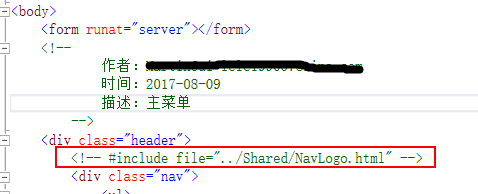1、ashx介绍以及ashx文件与aspx文件之间的区别
ashx是什么文件?
.ashx 文件用于写web handler的。
.ashx文件与.aspx文件类似,可以通过它来调用HttpHandler类,它免去了普通.aspx页面的控件解析以及页面处理的过程。其实就是带HTML和C#的混合文件。
.ashx文件适合产生供浏览器处理的、不需要回发处理的数据格式,例如用于生成动态图片、动态文本等内容。
ashx文件是.net 2.0新加的文件类型(其实在.net 1.0下已经可用,但是没有公开提供).
ashx文件和aspx文件有什么不同? 我们先新建一个ashx文件看看:
代码示例:
当然你完全可以用.aspx 的文件后缀。使用.ashx 可以让你专注于编程而不用管相关的WEB技术。.ashx必须包含IsReusable

<% @ webhandler language="C#" class="AverageHandler" %> using System; using System.Web; public class AverageHandler : IHttpHandler { public bool IsReusable { get { return true; } } public void ProcessRequest(HttpContext ctx) { ctx.Response.Write("hello"); } }
.ashx比.aspx的好处在于不用多一个html
比aspx简洁多了,只有一个文件,没有后台cs文件(基于代码安全考虑,后边我们会自己添加这个文件)
.ashx对比aspx文件就好像 少了cs文件,其实这就是ashx和aspx不同的地方,因为aspx要将前后台显示和处理逻辑分开,所以就弄成了两个文件。
其实,在最终编译的时候,aspx和cs还是会编译到同一个类中去,这中间就要设计html的一些逻辑处理。
而ashx不同,它只是简单的对web http请求的直接返回你想要返回的结果,比aspx少处理了html的过程,理论上比aspx要快。
看看.net config文件中对两个文件类型请求的配置吧
<add path="*.aspx" verb="*" type="System.Web.UI.PageHandlerFactory" validate="True" />
<add path="*.ashx" verb="*"
type="System.Web.UI.SimpleHandlerFactory" validate="True"
/>
可以看到两个文件处理的类不一样(ashx处理的类叫SimpleHandleFactory,既然叫Simple,应该处理过程也比较 Simple,响应速度也应该快点吧:)
2、DropDownList 动态绑定数据
前端源代码效果及后端代码,分别如下
<asp:DropDownList ID="ddlCurrencyCode" runat="server" Width="173"> <asp:ListItem Text="全部" Value="" /> <asp:ListItem Text="人民币" Value="RMB" /> <asp:ListItem Text="港币" Value="HKD" /> </asp:DropDownList>
this.ddlCurrencyCode.Items.Clear(); this.ddlCurrencyCode.Items.Add(new ListItem { Value = "", Text = "全部" }); ListItem listItem; list.ForEach(item => { listItem = new ListItem(); listItem.Text = item.Key; listItem.Value = item.Key; this.ddlCurrencyCode.Items.Add(listItem); });
3、动态控制颜色
<td align="center" style='color:<%# Container.ItemIndex == 0 ? "green":"red"%>'>
4、CheckBoxList动态绑定数据、CheckBox设置间距
<asp:CheckBoxList ID="chklSellChannelID" runat="server" RepeatDirection="Horizontal" RepeatLayout="Flow"></asp:CheckBoxList>
后端:

var lists = new BasicInfoPresenter().ConvertHotelSellChannel(SellChannels); chklSellChannelID.DataSource = lists; //根据lists的字段 去设置控制的value和text chklSellChannelID.DataValueField = "HotelSellChannelId"; chklSellChannelID.DataTextField = "ChannelName"; chklSellChannelID.DataBind(); foreach (ListItem item in chklSellChannelID.Items) { item.Attributes.Add("style", "display:block;margin-right:20px;float:left;"); if (item.Value.Contains($"{(int)SellChannelType.Static}") || item.Value.Contains($"{(int)SellChannelType.CB}")) { item.Selected = true; item.Enabled = false; } if (item.Value.Contains($"{(int)SellChannelType.Dynamic}")) { item.Selected = false; item.Enabled = false; } }
CheckBox选中的判断:

ListItem _list; foreach (var ctl in chklSellChannelID.Items) { if (ctl is ListItem) { _list = (ListItem)ctl; if (_list.Selected == true) { } } }
5、asp.net使用include包含文件
用asp.net使用include包含文件?……有必要吗?使用“用户控件”不是更好吗?
当然,绝大多数情况下,用户控件都能解决问题。但若要在用户控件中需包含其他公用块,即使用用户控件嵌套,老是出问题,而且也没必要使用asp.net的用户控件,因为我要包含的块是静态的,例如在head中包含一个logo……
1、asp.net页面也可以像asp那样,用include来包含文件:
<div class="includeParent"> 3.include htm: <!--#include file="include/HeadAd.htm"--> </div>
2、也可以包含有服务端代码的aspx或ascx文件,但它必须是动态编译的文件(是CodeFile或单文件,而非CodeBehind编译的)。
<div class="includeParent"> 4.include aspx: <!--#include file="include/HeadNav.aspx"--> </div> <div class="includeParent"> 5.include ascx: <!--#include file="include/HeadNav.ascx"--> </div>
HeadNav.aspx和HeadNav.ascx的内容示例:
<div class="includeDiv"><%=Guid.NewGuid().ToString()%></div>
3、也可以使用asp.net的“Response.WriteFile”方法,但仅限于静态文件:
<div class="includeParent"> 1.WriteFile htm: <%Response.WriteFile("include/HeadAd.htm");%> </div>
实际应用,将图片放NavLogo.html中当公共页面,被多个页面共享,发生修改时只改一处即可。

NavLogo.html的内容如下:
<div class="logo-grop"> <img class="logo" src=<%=System.Web.Configuration.WebConfigurationManager.AppSettings["navLogoImg"] %> title="logo" /> </div>
6、aspx前台写后台代码控制显示与否
有时候在一个Table中展示了一些列,但是可能某一列只在特殊条件下 才要展示出来。那就可以在前台写C#代码来控制。
利用 <% %>来控制,在后台定义一个bool型变量VisibleInfo作为控制。

<tr> <th width="14%" height="20" >原幣</th> <th width="10%" >匯率</th> <th width="14%">港幣</th> <th width="14%" >提交港幣</th> <th width="14%" >實收金額 </th> <% if (VisibleInfo) { %> <th style="16%">ctrip促銷</th> <%} %> <th width="34%">優惠</th> </tr> <tr> <td align="center"> <asp:Literal ID="original" runat="server"></asp:Literal></td> <td align="center"> <asp:Literal ID="exchangeRate" runat="server"></asp:Literal></td> <td align="center"> <asp:Literal ID="dollarhk" runat="server"></asp:Literal></td> <td align="center"> <asp:Literal ID="submit" runat="server"></asp:Literal></td> <td align="center"> <asp:Literal ID="receivedAmount" runat="server"></asp:Literal> </td> <% if (VisibleInfo) { %> <td style="text-align: center"> <asp:Literal ID="PromotionPrice" runat="server"></asp:Literal></td> <%} %> <td align="center">
7、asp.net几种数据绑定方法
- 使用<%= %> ,=后面接后端的变量或者有返回值的方法,且他们的访问修饰符为protected或者public
例如:(1)前端代码:
<span><%=Content%></span>
后端代码:
public string Content;
protected void Page_Load(object sender, EventArgs e) { Content="this is a demo!" }
<span><%=Content%></span>等价于<span>this is a demo!</span>
提示:Content必须是公有或者受保护的变量
也可以是后端的方法
<span><%=getName()%></span>
- 使用<%#Eval()%>方法,该方法用于定义单向(只读)绑定
绑定数据的字段,一般用在数据绑定控件DataBind()方法执行时被执行
<asp:Lable id="lable1" runat="server" Text='<%#DataBind.Eval(Container.DataItem,"UserName")%>'/> 简化版 <asp:Lable id="lable1" runat="server" Text='<%#Eval("UserName")%>'/>
- 使用<%#Bind()%>方法,该方法用于定义双向(可读可写)绑定
<asp:Lable id="lable1" runat="server" Text='<%#Bind("UserName")%>'/>
- 数据绑定表达式,<%# 数据绑定表达式%>,数据绑定表达式可以是一个变量,也可以是一个带返回值的c#方法
例如:
<li> <span><%#getName()%></span><!--getName()为一个后台有返回值的方法--> </li> <li> <span><%#UserNake%></span><!--UserName为后台一个公有或受保护的变量--> </li>
提示:上诉<%#%>数据绑定方法用于服务器控件,必须通过DataBind()绑定数据源
8、WebForm 之 Ajax 请求后端处理
通常采用一般处理程序(.ashx)来处理,新建一个页面和一般处理程序
aspx前端页面,创建表单元素

<body>
<div>
用户名:<input type="text" id="name"><br />
密 码:<input type="text" id="pwd" />
</div>
<div>
<input type="button" value="提交" onclick="javascript:submit();" />
</div>
</body>
点击 "提交" 按钮 往后台异步请求,并弹出后台返回的文本数据。
async 默认值: true。默认设置下,所有请求均为异步请求。如果需要发送同步请求,请将此选项设置为 false。
注意,同步请求将锁住浏览器,用户其它操作必须等待请求完成才可以执行。

<script type="text/javascript">
var submit = function () {
var name = $("#name").val();
var pwd = $("#pwd").val();
$.ajax({
url: "WebFormAjaxDemo.ashx",
type: "post",
data: { "name": name, "pwd": pwd, "requestMethod": "register" },
dataType: "text",
//async: false,
beforeSend: function (XHR) {
},
complete: function (XHR, TS) {
},
success: function (data) {
alert(data);
}
});
};
</script>
一般处理程序的后台处理前台发送的请求,并返回处理的结果。

public void ProcessRequest(HttpContext context) { // 接收前台要请求的方法 string requestMethod = context.Request["requestMethod"]; // 存储返回结果 string returnResult = string.Empty; // 这种方式可以处理前台的多种异步请求 switch (requestMethod) { case "register": { returnResult = Register(); } break; default: { returnResult = "no method"; } break; } // 返回处理结果 context.Response.Write(returnResult); } /// <summary> /// 注册 /// </summary> /// <returns></returns> public string Register() { // 获取表单数据 var name = HttpContext.Current.Request["name"]; var pwd = HttpContext.Current.Request["pwd"]; if (pwd == "123") { return "ok"; } return "no"; }
不过实在不想新建一般处理程序ashx,而采用aspx.cs后端也可以,例如:

function AjaxRquest() { $.ajax({ url: location.href, type: "POST", data: { "RequestType": "AjaxRequest", "id": "1" },//模拟个数据 success: function(data) { alert(data); } }); }

protected void Page_Load(object sender, EventArgs e) { if (Request["RequestType"] == "AjaxRequest") { string id = Request["id"]; Response.Clear(); Response.Write("ID : " + id + " ," + DateTime.Now); Response.End(); return; } }
9、.aspx文件都以Page指令开始
<%@ Page Language="C#" AutoEventWireup="true" CodeFile="Home.aspx.cs" Inherits="GENV.Home" %>
Page指令指定了页面所采用的语言,并且告诉ASP.NET从哪里可以找到关联的代码文件。
AutoEventWireup="true"以自动方式将页事件与方法相关联。CodeFile特性指定包含代码隐藏的文件,Inherit特性指明正在使用的类(partial class分部类,后台代码的类名)
<%@Register src="xxxx.ascx" %>引用一个用户控件,将它注册到当前页面来使用。
10、Http中Get/Post请求区别
对于get方式,服务器端用Request.QueryString获取变量的值,
对于post方式,服务器端用Request.Form获取提交的数据。
eg:
get方式 <a href="View.aspx?cityid=CITY0001"><liclass="li2"></li></a> 后端 String cityID =Request.QueryString["cityid"];
post方式 var url ="Handler/ViewHandler.ashx";
$.post(url, {type:"getCheChangByID",id: id...... 后端 string ID = context.Request["id"];
